Sharpening colored pencils without breakage requires a delicate touch and the right techniques to preserve the integrity of their softer cores.
Colored pencils, with their vibrant pigments and waxy compositions, can be prone to snapping during sharpening if not handled with care.
In this guide, we will explore methods to achieve a fine point without compromising the structural integrity of colored pencils.
From selecting the right sharpening tools to adopting proper techniques, these tips will help artists and enthusiasts sharpen their colored pencils effectively, ensuring a smooth and enjoyable coloring experience without the frustration of frequent breakage.
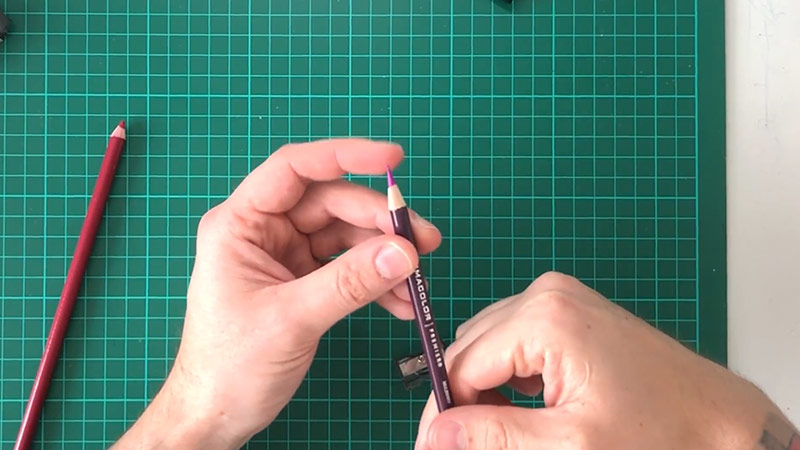
How to Sharpen Colored Pencils Without Breaking?
Sharpening colored pencils without breaking them requires some care and the right tools. Colored pencils have a softer core than regular graphite pencils, making them more prone to breakage if improperly handled.
Here are some tips to help you sharpen colored pencils without breaking them:
Use a High-Quality Pencil Sharpener
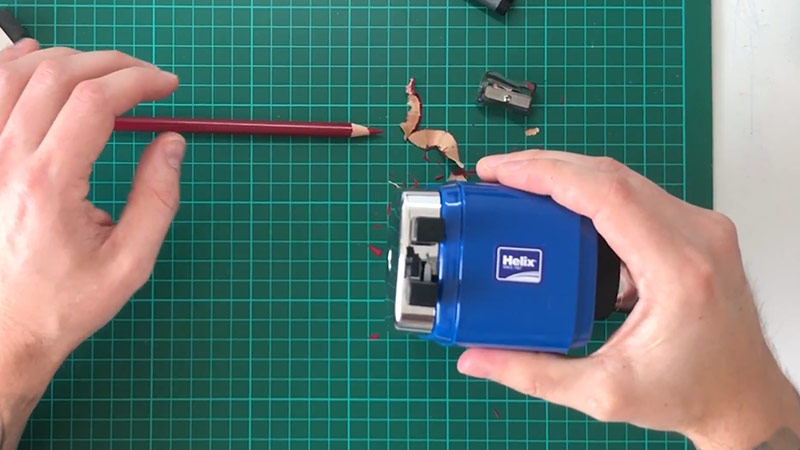
Investing in a high-quality pencil sharpener designed explicitly for colored pencils is crucial. Look for sharpeners with multiple blades or adjustable settings specifically labeled for colored pencils.
These sharpeners are engineered to handle the delicate and softer cores of colored pencils with precision, minimizing the risk of breakage while achieving a sharp point.
Sharpen Gently
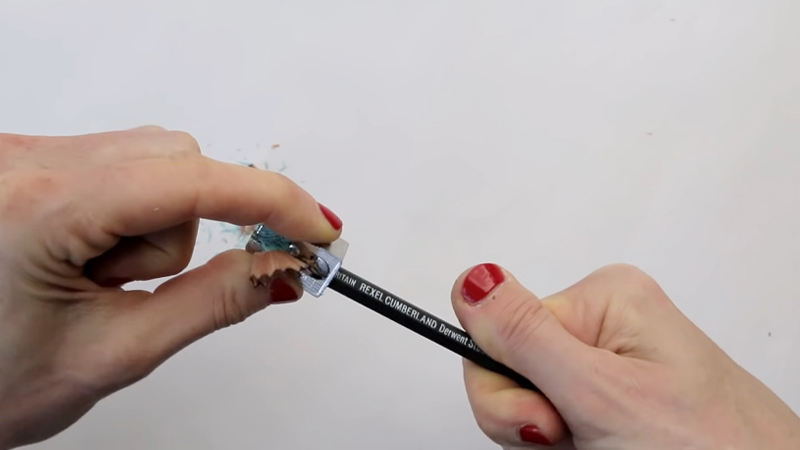
Gentle sharpening is key to preserving the integrity of colored pencils. Apply moderate pressure and slowly turn the pencil in the sharpener.
Avoid forcing the pencil into the sharpener or turning it too quickly, as this could lead to breakage. Allow the sharpener to do the work, and stop once you achieve the desired point.
Rotate the Pencil
Rotating the pencil as you sharpen is a simple yet effective technique. This ensures an even point and minimizes stress on one side of the core.
By distributing wear and tear evenly across the colored pencil, you contribute to its longevity and reduce the risk of breakage.
Freeze the Pencils
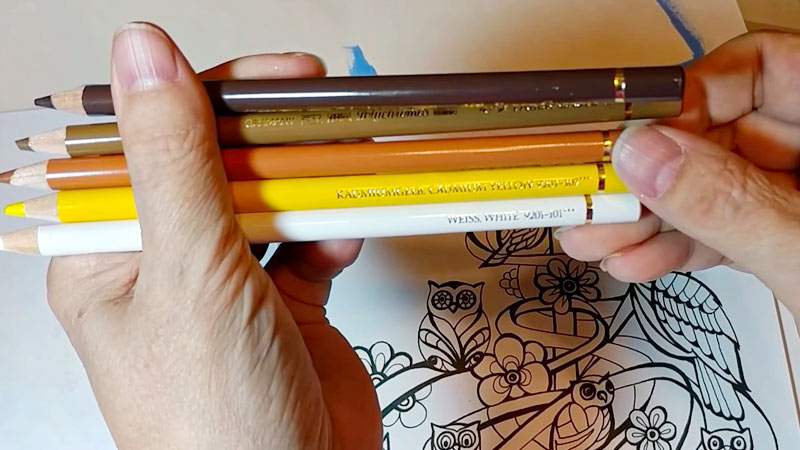
Placing colored pencils in the freezer for 15-20 minutes before sharpening can be helpful. The cold temperature makes the core slightly firmer, reducing the chances of breakage.
However, it’s essential to avoid leaving them in the freezer for an extended period, as extreme temperature changes can potentially impact the overall quality and performance of the colored pencils.
Empty the Sharpener Regularly
Regularly emptying the sharpener is a practical maintenance step. Colored pencil shavings can accumulate quickly, potentially clogging the sharpener.
Keeping it clean ensures that the sharpener remains effective, preventing unnecessary strain on the pencil during the sharpening process.
Choose the Right Angle
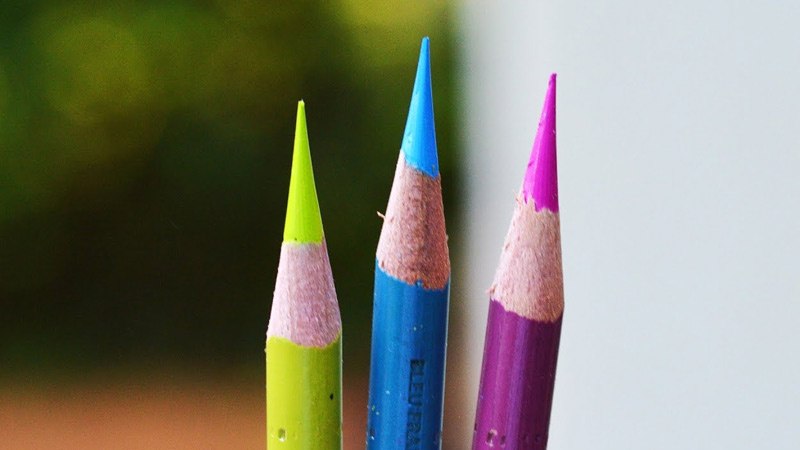
Opting for a slightly shallower sharpening angle compared to graphite pencils is thoughtful. This helps maintain the structural integrity of the softer colored pencil core.
A more gradual sharpening angle reduces the likelihood of breakage and provides a better overall coloring experience.
Inspect the Pencil
Take breaks during the sharpening process to inspect the pencil. Look for any signs of weakness or the core being on the verge of breaking.
If you notice such indications, it’s advisable to stop sharpening and use the pencil as is. Attempting to sharpen it further may result in breakage.
Consider Hand-Sharpening
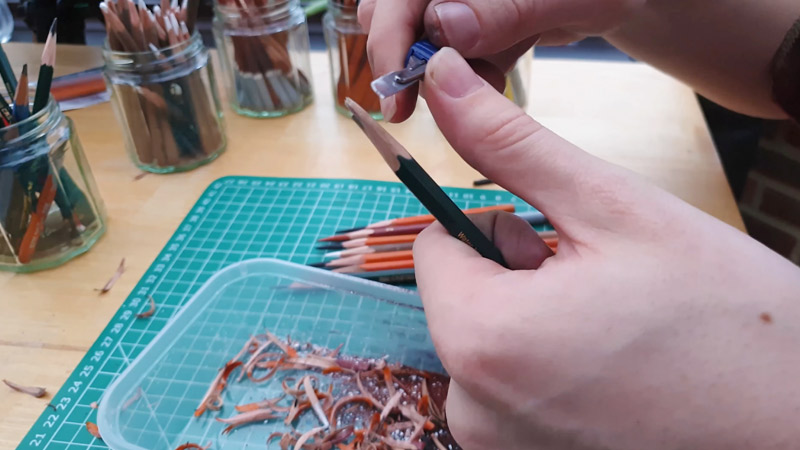
Hand-sharpening with a craft knife or a sanding block is a viable option for those seeking the utmost control over the sharpening process.
While this method requires a bit more skill, it allows for precise adjustments and minimizes the risk of breakage.
Take your time and enjoy the craftsmanship of hand-sharpening for a tailored pencil point.
Why Do Colored Pencils Break When Sharpening?
Colored pencils are more prone to breaking during sharpening than graphite pencils due to several factors related to their composition and nature.
Here are the reasons why colored pencils keep breaking when sharpening:
Softer Cores
Colored pencil cores are formulated to be softer to allow for vibrant color application. Including pigments, waxes, and binders creates a delicate core that can break more easily under pressure.
The balance between the softness for color and the durability needed during sharpening is delicate.
Pigment Sensitivity
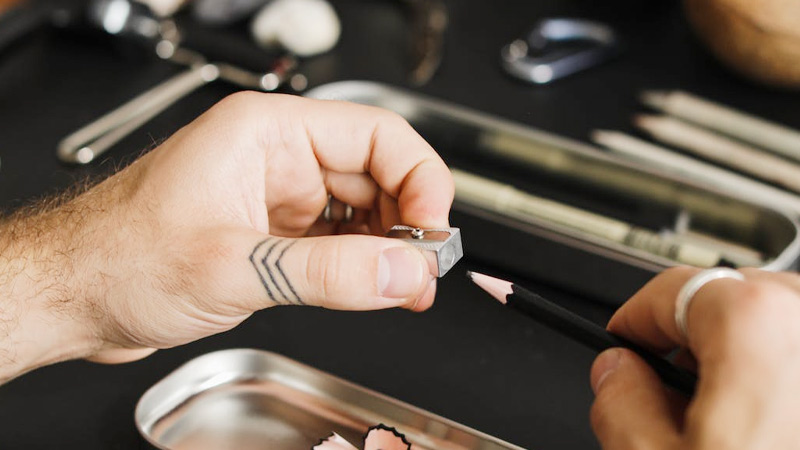
The pigments in colored pencils vary in hardness, which can affect the pencil core’s overall durability. When combined with a softer core, Brittle pigments create a susceptibility to breakage.
Additionally, uneven distribution of pigments within the core can result in weak points, making the pencil more prone to snapping during sharpening.
Wax Content
The higher wax content in colored pencils contributes to their smooth coloring and blending properties. However, this waxiness also makes the pencil more susceptible to breakage during sharpening.
The heat generated during the process can soften the wax, compromising the structural integrity of the core.
Inherent Variability
The diverse range of colored pencil brands and formulations introduces hardness, softness, and quality variability.
Cheaper or lower-quality colored pencils may lack consistency in manufacturing, leading to cores that are more prone to breakage.
Investing in higher-quality colored pencils often translates to a more reliable and break-resistant product.
Sharpening Technique
Breakage often occurs due to incorrect sharpening techniques. Applying excessive pressure, turning the pencil too quickly, or using a sharpener not specifically designed for colored pencils can place undue stress on the softer core.
A gentle and controlled approach, along with the use of appropriate tools, helps minimize the risk of breakage.
Temperature Sensitivity
Colored pencils can be sensitive to temperature changes. Extreme temperatures can alter the softness of the pencil core.
Freezing colored pencils before sharpening is a technique to make the core firmer and reduce breakage.
However, avoiding prolonged exposure to extreme temperatures is crucial, which could impact the pencil’s overall quality.
Uneven Pressure
Uneven pressure during sharpening can create weak points in the pencil core. If one side is sharpened more than the other, it creates an uneven stress distribution, increasing the likelihood of breakage.
Consistently applying pressure and rotating the pencil during sharpening helps maintain structural integrity.
Quality of Sharpener
The choice of sharpener is critical in preventing breakage. Low-quality or dull sharpeners can cause increased friction and resistance during sharpening.
High-quality sharpeners, especially those designed for colored pencils with multiple blades or adjustable settings, are specifically crafted to handle the softer cores without compromising their structural integrity.
Investing in a quality sharpener is essential in preventing breakage during sharpening.
How to Sharpen a Colored Pencil Without a Sharpener?
Sharpening a colored pencil without a sharpener may be necessary in certain situations, such as when you don’t have access to a sharpener or are outdoors.
Here are a few alternative methods to sharpen colored pencils without a traditional pencil sharpener:
Use a Craft Knife or Utility Knife
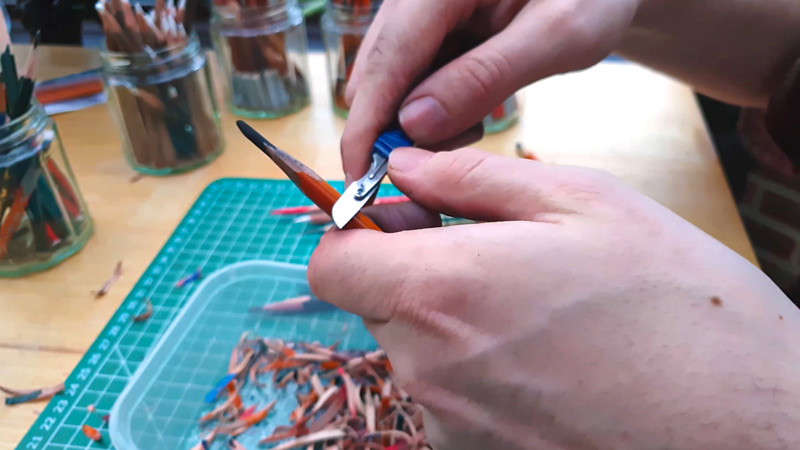
A craft knife or utility knife can be handy for sharpening colored pencils. Hold the pencil steady with one hand and carefully shave away the wood in small, controlled strokes.
Rotate the pencil as you go to maintain an even point. Exercise caution to avoid cutting yourself and preserve the pencil core’s integrity.
Sandpaper or Emery Board
Sandpaper or an emery board can be an effective alternative. Lay the sandpaper flat and rub the pencil against it circularly.
This method allows for more control over the sharpening process and is suitable for achieving a fine point. Choose sandpaper with medium to fine grit for best results.
Rock or Concrete Surface
If you’re outdoors, you can use a flat rock or a concrete surface to sharpen your colored pencil.
Rub the pencil against the surface in a circular or back-and-forth motion to gradually shape the point. Be cautious not to apply too much pressure, as this can lead to breakage.
Pocket Knife or Swiss Army Knife
Like a craft knife, a pocket knife or a Swiss Army knife can be used for manual sharpening.
Hold the pencil securely and use the blade to shave away the wood, turning the pencil to maintain an even point. Again, exercise care to prevent injuries and preserve the pencil core.
Nail File or Emery Board
A nail file or emery board designed for nails can be a makeshift sharpener. Gently file the pencil tip against the file or emery board, shaping it to your desired point. This method provides control and is suitable for achieving a fine point.
Scissors
While not as precise, scissors can be used to remove the wood from around the pencil tip. Hold the colored pencil in one hand and carefully cut away the wood in small increments. This method requires patience to avoid damaging the pencil core.
Rotary Tool with Sanding Attachment
Accessing a rotary tool with a sanding attachment can be a quick and efficient way to sharpen colored pencils.
Hold the pencil steady and use the rotary tool to shape the point. Exercise caution and use low speeds to prevent overheating or damaging the pencil core.
How Do You Sharpen a Pencil Sharpener Blade Without a Stone?
Sharpening a pencil sharpener blade without a stone can be accomplished with a few alternative tools.
Here are some methods to help you sharpen the blade of a pencil sharpener without using a sharpening stone:
Sandpaper
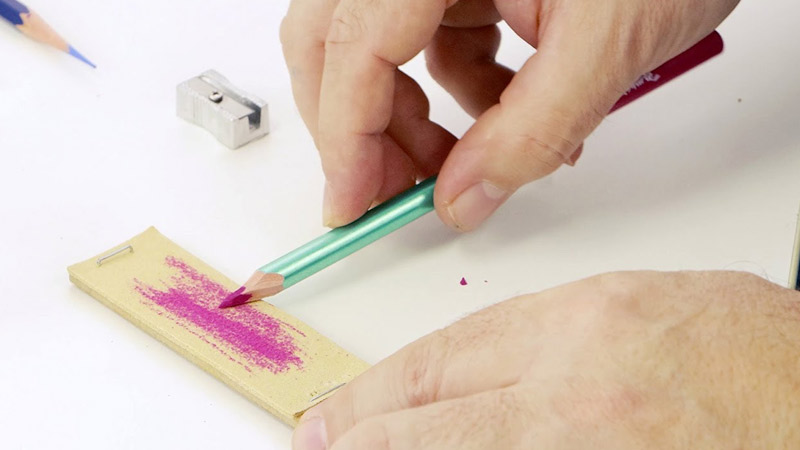
Sandpaper is a versatile tool for sharpening various blades, including those of a pencil sharpener. Begin by removing the blade from the sharpener if possible.
Lay the sandpaper on a flat surface, and with a circular or back-and-forth motion, rub the blade against the sandpaper.
Start with a coarse grit and gradually move to finer grits for a smoother edge. Reassemble the pencil sharpener once the blade is sharpened to your satisfaction.
Emery Board or Nail File
An emery board or nail file can be used similarly to sandpaper. Gently file the blade, moving it across the abrasive surface consistently.
Pay attention to maintaining the original bevel of the blade. This method is suitable for small blades like those found in pencil sharpeners.
Metal File
A metal file is another effective tool for sharpening pencil sharpener blades. Use a file with a fine or medium grit.
Hold the blade at a consistent angle and file in one direction, moving the file away from the blade’s edge.
Repeat the process until you achieve the desired sharpness. Ensure the blade is securely fixed to prevent any accidents during the sharpening process.
Whetstone or Hone
While not a traditional sharpening stone, a whetstone or honing stone can be used as an alternative. Wet the stone and rub the blade against it in a circular or back-and-forth motion.
Maintain a consistent angle to sharpen the edge evenly. This method may require a bit more skill, but it can be effective for honing the blade.
Leather Strop
A leather strop is typically used for polishing and refining edges. Apply a small amount of polishing compound to the leather and, using a consistent angle, draw the blade across the strop.
This process can help refine the sharpener blade and improve its cutting performance.
Bench Grinder
If you have access to a bench grinder, you can use it to sharpen the pencil sharpener blade. Hold the blade at a steady angle against the grinder wheel, moving it in a controlled manner. Avoid overheating the blade by dipping it in water periodically during the process.
FAQs
Can using a regular pencil sharpener damage colored pencils?
Regular pencil sharpeners can be harsh on colored pencils due to their softer cores.
It’s recommended to use sharpeners specifically designed for colored pencils to minimize breakage.
How do freezing colored pencils help prevent breakage during sharpening?
Freezing colored pencils for 15-20 minutes before sharpening can slightly firm up the core, reducing the risk of breakage.
However, avoid prolonged exposure to extreme temperatures.
Is hand-sharpening with a craft knife a good alternative?
Hand-sharpening can be effective with careful control. Using a craft knife allows for precision, minimizing breakage risks. However, it requires skill and patience.
Can uneven pressure during sharpening contribute to breakage?
Yes, uneven pressure can create weak points in the pencil core.
Maintaining consistent pressure and rotating the pencil during sharpening helps distribute stress more evenly.
Are there any signs that indicate a colored pencil is about to break during sharpening?
Signs of weakness, visible stress lines, or a core on the verge of breaking are indicators. If noticed, it’s advisable to stop sharpening and use the pencil as is to prevent further breakage.
To Recap
Mastering the art of sharpening colored pencils without breakage is crucial for enhancing the longevity and usability of these artistic tools.
By choosing high-quality sharpeners designed for colored pencils, employing gentle techniques, and being mindful of factors such as temperature and pigment sensitivity, artists can enjoy a seamless coloring experience.
Regular inspection of the pencil, strategic rotation during sharpening, and considering alternative methods contribute to a successful sharpening process.
As colored pencils hold their unique place in artistic expression, sharpening them without breakage becomes essential, ensuring the preservation of both the pencil’s structural integrity and the artist’s creative flow.
Leave a Reply